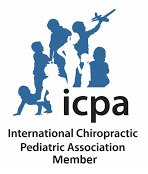The simple act of bending to tie your shoes shouldn’t cause pain. But for millions of Americans, this basic movement can lead to sudden twinges and other discomforts. Research shows that 80% of adults experience significant back pain at some point in their lives. Yet, the impact extends far beyond physical discomfort.
Low back pain affects sleep quality, work performance, and even daily activities. Many people initially dismiss these symptoms as temporary inconveniences. Others rely on pain medications for weeks or months, hoping the problem will resolve itself. But understanding when to seek professional care can prevent chronic issues from developing (or getting worse).
So, when should you see a professional for back pain? Is chiropractic care right for you? In this article, we take a closer look at low back pain and how chiropractic care can help—as well as when you should consider it.
Why Does My Low Back Hurt?
Low back pain stems from various factors affecting muscles, nerves, and spinal structures. Modern, sedentary lifestyle habits contribute significantly to these issues, with common causes of low back pain including:
- Herniated or bulging discs causing nerve compression
- Muscle or ligament strains from improper lifting techniques
- Degenerative disc disease related to aging
- Spinal stenosis narrowing nerve pathways
- Sciatica affecting the sciatic nerve
- Work-related repetitive stress injuries
- Sports injuries or sudden trauma
- Arthritis affecting spinal joints
- Poor posture during prolonged sitting
- Structural problems like scoliosis
Many conditions start with minor discomfort before developing into chronic problems. However, sometimes, back pain can come on suddenly. Either way, early intervention often leads to better outcomes.
When Should I See a Chiropractor for Lower Back Pain?
Research supports chiropractic care as an effective treatment for many types of back pain. In other words, it may just help you get back on your feet and back to the activities you love than much faster. So, when should you seek professional care? Here are some tell-tale signs:
The Pain Persists Beyond a Week
Acute back pain typically improves on its own within several days. However, pain lasting longer suggests underlying issues requiring professional evaluation, such as chiropractic care.
The Pain Radiates Down Your Legs
Radiating pain often indicates nerve involvement, particularly sciatic nerve compression. This condition affects up to 40% of adults. Yet, chiropractic treatment can address nerve impingement through specific adjustments.
Morning Stiffness That Lasts for Hours
Extended morning stiffness indicates potential inflammatory conditions or spinal misalignment. Luckily, a professional assessment can identify whether arthritis, disc problems, or muscle inflammation cause these symptoms.
Your Regular Activities Become Difficult
Pain affecting daily functions requires immediate attention. Obtaining early treatment can help prevent your back pain from impacting your daily function and activities. Chiropractic care aims to restore normal movement patterns, ensuring your pain doesn’t become a daily disruption.
Over-the-Counter Solutions Aren’t Working
When standard treatments fail, underlying issues likely need addressing. Chiropractic care can help address these underlying issues, fixing your pain at the root cause.
Additional Warning Signs
It’s important to note that low back pain accompanied by fever may indicate infection. Additionally, sudden weakness in the legs or loss of bladder control requires emergency care. Thus, you should seek out immediate medical attention if this is currently on your list of symptoms.
How Your Plano Chiropractor Can Help
Professional evaluation begins with a comprehensive physical examination and detailed medical history. At Keystone Chiropractic, your chiropractor will assess your range of motion in affected areas, nerve function, and reflexes. We’ll examine muscle strength, tension patterns, and spinal mobility. Walking gait and posture analysis provide additional insights into underlying issues.
This thorough assessment helps determine the most effective treatment approach. In fact, many patients see improvement within six to 12 sessions, though individual results vary.
Depending on the root cause of your pain, we may also provide posture correction strategies and lifestyle modification recommendations. These comprehensive approaches help prevent future problems, ensuring you don’t endure recurring pain or issues.
Ready to get to the root cause of your pain? Book your appointment with our caring and compassionate team today! Pave your way toward better health and a life where pain doesn’t stand in your way.





